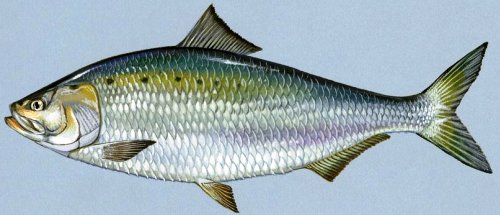
With a salmon hatchery program no longer clouding issues, the US Fish & Wildlife Service (US F&WS), National Marine Fisheries Service, and directors from Connecticut, Massachusetts, Vermont and New Hampshire have a singular opportunity to redeem the Connecticut River restoration.
They’re currently making choices for restoring migratory fish north to Bellows Falls, Vt., begun under the 45 year-old New England Cooperative Fisheries Compact. The decisions stem from the 1965 Anadromous Fish Conservation Act. They’ll seal this ecosystem’s fate at four federally-licensed dams and the Northfield Mountain Pumped Storage Station until 2058.
US F&WS’s Region 5 Director Wendi Weber, John Warner, and Ken Sprankle will join National Marine Fisheries’ Daniel Morris, Julie Crocker, and Mass. Fish & Wildlife’s Caleb Slater in making the decisions—with input from state directors. Their 1967 mandate is restoration of shad and herring runs to offer the public “high quality sport fishing opportunities” and provide “for the long-term needs of the population for seafood.”
Sadly, in 1980 their predecessors abandoned two miles of the Connecticut to the power company operating at Turners Falls and Northfield Mountain. By allowing privatization of the river at mile 120, they killed chances of passage success for millions of American shad barred from spawning at Greenfield, Gill and Northfield, Mass., right to the foot of Bellows Falls at Walpole, N.H. at mile 172. Unwittingly, they also continued the decimation of the ancient spawning grounds of the river’s last, 300, viable federally-endangered shortnose sturgeon.
Instead of mandating river flows and a direct route upstream to a lift at the dam, they acquiesced to diverting migrants into a power canal. That Rube Goldberg–a three-trick knot of currents and ladders, proved an utter failure to the hundreds of thousands of shad moving upstream annually through elevators at Holyoke Dam. There, via a lift built in 1955, 380,000 American shad streamed north in 1980. It’s the East Coast’s most successful fish passage; it by-passes the city’s canals.
Half or more of those shad swam upstream; but foundered in the treacherous Turners Falls complex. At the dam, just as today, some depleted their energies by treading water for weeks—washed back and forth by a power company’s deluge-and-trickle releases, finding no elevator or upstream entrance. Many eventually turned back, only to be tempted by spill from their power canal.
Fish unlucky enough to ascend the ladder there found a desperate compromise. Over 90% wouldn’t exit alive. Just as today, alien habitat and extreme turbulence overwhelmed them. Only 1-in-100 emerged upstream. For the rest, a turnaround spelled almost certain death in turbines. Others lingered for weeks in an alien canal environment, until they expired. Just as today.
This year over 490,000 shad passed Holyoke. Half or more attempted to pass Turners Falls. Just 26,000, or 1-in-10, swam beyond the dam–a percentage consistently reached in the 1980s. This is described as “success” by US Geological Survey Conte Lab scientists, Dr. Alex Haro and Dr. Ted Castro-Santos, after 14 seasons of canal study. In work garnering annual power company subsidies, they’ve attempted to model that canal is a viable migration path.
I interviewed Dr. Haro in 2007, subsequent to a 1999-2005 study finding shad passage at Turners Falls had plummeted to “one percent or less” directly on the heals of Massachusetts 1999 energy deregulation for the Northfield Mountain-Turners Falls’ complex. I asked why passage had failed there, “I wouldn’t call it failure,” Haro replied.
Fish passage saw no significant rebound until 2010, when the effects of GDF-Suez’s Northfield Mountain plant were stopped cold for 6 months—sanctioned by the EPA for massive silt dumping. Likewise, Dr. Castro-Santos’s claims to passage of one-in-10 fish as progress seem deeply troubling when his findings, after 14 years, are just now revealing shad dying “in droves” in that canal, “We don’t know why.”
In 1865, James Hooper, aged 86, of Walpole, N.H. reported: (from The Historical Society of Cheshire County (NH)“The area just below Bellows Falls was a famous place for catching shad because they gathered there but did not go up over the falls. The fish were caught with scoop nets. One spring Hooper helped to haul out 1300 shad and 20 salmon with one pull of the net.”
Citizens upstream of the 1798 Turners Falls Dam need not accept the dead shad runs and severed ocean-ecosystem of the last 214 years at a dam operated to cull price-spikes from the electricity “spot market.” An 1872 US Supreme Court decision against owners of Holyoke Dam mandates passage of the public’s fish.
Nor do citizens from Old Saybrook, Conn., to Bellows Falls have to accept endangered sturgeon, a lethal canal, and a dead river at mile 120. After 32 years of fatal attraction at Turners Falls, its time to stop steering fish into a canal death trap. Holyoke proves that’s possible.
Editor’s Note: Karl Meyer lives in Greenfield, Mass. He is a member of the Society of Environmental Journalists.